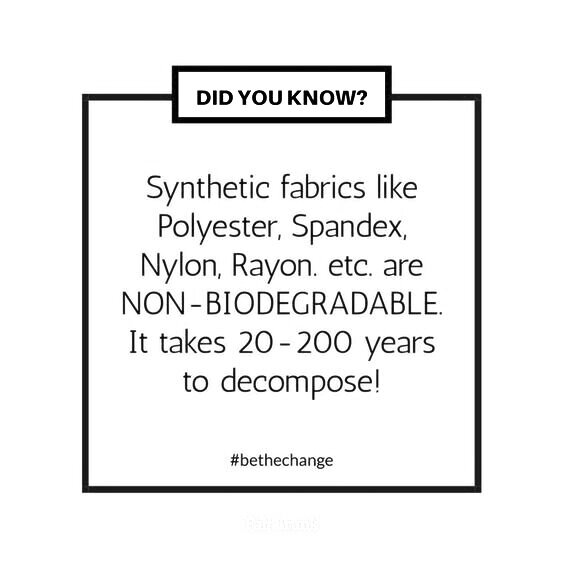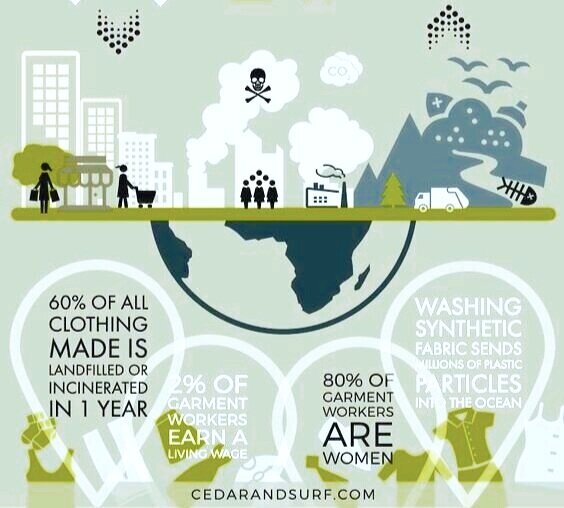By Alley Biniarz
The first time sustainable fashion came onto my radar was while I was living in Halifax, Nova Scotia. It was 2016 and I was still very much rooted in “shopping as a way to combat mental illness”. Before living here, you could find me shopping for every social outing, dashing for the mall anytime I felt bad about myself, and self-soothing through $5-$10 garments. Honestly, I didn’t realize it was a problem before I started noticing an alternative: something called “ slow fashion ”.
Slowing down made me uncomfortable – and it still does. Slowing down meant I would have less. Slowing down, in my mind, meant less work, which equaled less money, which led to the idea of not being able to buy glorious THINGS. Not participating in a consumerist lifestyle made me feel like I, as a person, was less than. Pre-2016 me equated personal success with having stuff…and lots of it.
“Thrifting was this amazing way to find accessibly priced clothing, but many resale or consignment shops were still lined with the problem: fast-fashion brands like H&M, Forever 21, Zara, Lululemon, Nike, and all of your standard mall shop pieces. ”
So, when I stumbled into a Halifax shop called MakeNew (now known as Ana + Zac), I remember taking one look at the price of their line “Not Perfect Linen” and my heart sinking. How could I possibly afford a $160 dress on a student budget? There was no way I could have it AND all the other things I wanted. I didn’t have the mindset of buying one item versus five; it wasn’t in my vocabulary. Instead, I opted for their gorgeous thrifted garments section. These prices sat comfortably with me at the $30- $40 range and I felt like I still had room in my budget for more. But each time I walked into the shop, I continued to eye that linen dress. I walked by it; I touched it; but I never tried it on.
By the time I left Nova Scotia to move back to Ontario, my lifestyle had shifted. I wasn’t yet ready to make investments in my wardrobe, but I was more conscious about my purchases. Windsor was just starting to inch towards this mindset, and it was more challenging for me to connect with people here – at first – compared to my friend group in the Maritimes. In time, I curated a group of Instagram friends who felt similarly about sustainability and feminism. The more I surrounded myself with the hidden beautiful people in my hometown, the more I felt like I was part of this new shifting narrative in Windsor.
It was on social media that I first began diving into sustainability in the fashion industry, specifically looking at the fast fashion companies and how destructive they were both to our planet and its people. I felt helpless as I read through pages of information about microplastics in polyester pieces and how even “100% cotton” was greenwashing, as cotton was one of the most destructive natural fibers in the industry. At that point I had already been thrifting for a year or so, but I wanted to take it further.
I finally understood why good-quality pieces were the solution. Buying a more expensive piece meant actually thinking about the purchase, not just mindlessly buying something because it was cheap. Making that conscious investment would mean keeping a piece for longer in my closet, rather than in the landfills.
Myself, and so many others, were so used to spending next to nothing on clothing, that we eventually became disconnected with something we interact with on the daily. Before then, I never stopped to think about the people who made those cheap garments or how ON EARTH they were being paid fairly when we were only paying $10, under minimum wage, with a CEO on the other end collecting the most of it. Something didn’t add up. Who got cut out of this deal? Who got the shit end here? Spoiler: it’s not the CEO.
It got me thinking again about that same dress in Halifax. That beautiful silvery blue linen dress that I had seen over a year ago. It was still on my mind, and that’s how I knew it was right for me. When I went back to Halifax for my Master’s residency, I went back to that store, tried it on, and made the purchase. It was the scariest purchase because it was an investment. And it meant I could only get ONE thing.
This dress came with a tag that said it was made fairly in Lithuania by a small family, out of sustainable linen (flax) which was harvested and treated properly. The entire process from the harvest to the manufacturing maintained transparency, and all of the information was accessible. For the first time in my life, I actually felt great after a purchase rather than leaving the store with “buyer’s guilt”.
Throughout my Master’s program, I would go back to Nova Scotia for school and always plan a shopping trip there because Windsor did not have these sustainable stores. It was great being able to wait to make a purchase, but not everyone could fly or drive to another city to buy a good-quality garment. I wanted to bring that same mindset here, to Windsor.
I really wanted others to understand the importance of these quality pieces. To be able to try a piece on, to connect with it on their bodies, to know its journey and story, and then to consciously and responsibly make that purchase. In came the idea for Grown Lady Garments. I was not familiar with starting a curated collection of sustainable clothing, but I knew I wanted Not Perfect Linen to be in the mix.
“I wanted to support small clothing makers and bring in brands that made people feel comfortable and confident in their pieces. I wanted someone to say: “This is the best thing I’ve ever put onto my body.” And, that has absolutely happened since GLG’s birth in April of 2020. ”
GLG is fiery and unpredictable and I love what she’s taught me. I love what she’s taught Windsor’s community. I love that I have to vouch for these prices and these pieces every day because I know they are worth it. They are made with love by amazing garment makers…who actually get fair wages! It is clothing that is made to last, and to connect to the consumer’s conscious rather than to their wallets.
This garment journey helped me to take a look at my consumerist habits and ask myself, Why do I turn to shopping every time I’m sad? Or why do I feel like in order to belong I need my clothing to fit into the mold? Clothing should make YOU comfortable and confident in your own body. You deserve to have that connection with your clothing, and just like anything else, a purchase is an exchange of energy. It should never be mindless, as our world has created it to be. So, I hope that others can find joy in their garment purchases again; that they can find joy in putting on clothes that actually look and feel good on their bodies again. Because if it is not a HELL YES, it should be a no.
It took me a really long time to figure this out, and to take that leap into buying my first staple piece. There is never any judgment from me to others about the time it takes for them to connect with their first piece. It’s a position of privilege to be able to buy sustainably, and I hope that overtime, everyone can have access to quality clothing that makes them feel good.
“The (not) perfect piece always waits for the (not) perfect owner. ”







